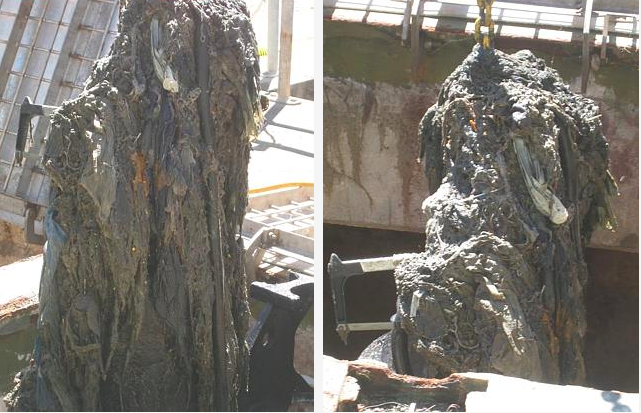Can you cut 1 Tonne of carbon pollution out of your life?
Take the challengeThis is a 1 Million Women community guest post from cosmetic chemist Daphne Kapetas.
Facial wipes, like a one night stand are single use items! At the time they both seem convenient and look pretty harmless to the naked eye. But like someone that you have only just met, you don't really know their history or what they are really like until you dig a little deeper.
Let's dig a little deeper into wet wipes.
Your skin
Wet wipes are designed to be effective in removing makeup, bacteria or in the case of baby wipes human waste residue. In order for these wipes to be effective they need to absorb specific chemicals. Some of the chemicals are high levels of preservatives, alcohol and anti-bacterial agents which keep the wipes usable and extend their shelf life. These wipes are then rubbed onto our skin and specifically around the delicate and thinner skin of the eye area. The high levels of alcohol can cause excessive dryness, premature ageing and at best, irritations.
Ineffective cleansing:
The active ingredients in makeup remover wipes are in general the same as regular liquid cleansers. Both liquid cleanser and wet wipes rely on surfactants, which dissolve makeup, as well as solubilizes and emulsifiers that help lift makeup, oil and dead skin. The big difference between wet wipe cleansers and liquid cleansers is the added step of rinsing with water. The convenience of wet wipes is partly due to the claim that they don't need running water and this in fact, makes them less effective in cleansing, with the consequence that they leave behind a portion of grim and product residue on your skin… similar to the nasties that can be left behind due to unprotected sex!

Image: Facebook Jill Weber
Contact dermatitis:
There are increased incidences of contact dermatitis due to the use of wet wipes or baby wipes. The significant eczematous dermatitis is often misdiagnosed as atopic dermatitis, impetigo, diaper dermatitis, or psoriasis. As soon as the use of these wet wipes was stopped, the dermatitis also stopped,
Wet wipes are quick and convenient but not optimal for overall skin health.
To flush or not to flush?
Contrary to some company's claim and according to Sydney Water, only human waste and toilet paper are actually flushable, as they are truly biodegradable. You can simply test this yourself, by getting a wipe and placing it into a container of water and in a different container place a sheet of toilet paper. Check out which one dissolves?
Blockages
There is an increasing global issue with wet wipes in our sewage systems. Blocked pipes can lead to sewage overflows into our homes and creeks. Over 75 percent of blockages involve flushed wet wipes. Sydney Water is removing 500 tonnes of wet wipe products from our sewage systems each year…that is the same volume as that of four blue whales.
If wet wipes don't end up on our beaches and in the sea…they end up in landfill.

Image: Daily Telegraph
Wet wipes are made from synthetic materials and so they also add to the issue of microfibres entering our oceans and therefore adding further plastic contamination to our marine environment.
More Land fill
Facial wipes are non-biodegradable and beware of the ones that claim they do.
One person on average, would use conservatively two wipes a day in the morning and evening. In a month that's around 60 wipes. Now, just imagine how many women, children and men use these wipes on a daily basis. Also think about the amount of energy, petroleum and trees it took to produce these wipes in the first place.
Your wallet
They are an expensive option to cleansing relative to liquid cleansers, soap, flannels and running water.
Consider using wipes as a 'treat' and only to be used when convenience outweighs the negative consequences of them….like removing makeup when you are on a plane and only after Customs has taken your 100ml cleanser off you!
The solution:
Facial wipes are not only single use items, they contain ingredients that are both harmful to our environment and are not great for our skin. No matter from what perspective you choose to view wet wipes, they are a costly expense.
As I am not an extremist, I get that wet wipes are convenient and that there will be occasions where you may feel the need to reach out for them. When you do, please do not flush them down the toilet. Avoid buying the ones that contain the irritant Methylisothiazolinone (MI or MIT). In fact, read product labels and avoid all isothiozolinones in personal care products.
For the majority of the time, be gentle to your skin and our environment by using water, liquid cleansing lotions or soap and facial flannels.
Daphne Kapetas is a qualified and experienced cosmetic chemist and marketer with a passion for sustainability and the dance floor. Having worked in the beauty industry with multinationals from, 'concept, product development to product launch,' for 16 years, she is an authority on all things cosmetic. Keep up with her at her website Daphne K Knows
Read this next: How to make reusable face wipes
Other Images: Shutterstock
Bibliography
1. Dr Alex Varol. Nappy Rash. The Australasian College Of Dermatologists. [Online] 2015. [Cited: November 10, 2015.] https://www.dermcoll.edu.au/atoz/nappy-rash/.
2. Nakrani, Mary Wu Chang MD and Radhika. Six Children With Allergic Contact Dermatitis to Methylisothiazolinone in Wet Wipes (Baby Wipes). PEDIATRICS. FEBRUARY, November 4, 2014, Vol. 133, 2.
3. DermNetNZ. Methylisothiazolinone allergy, 2016. dermnetnz.org/topics/methylisothiazolinone-allergy/ (accessed 2 September 2016).
4. Marine Conservation Society. (2016) Marine Charity Reveals How Wet Wipes Turn Nasty When You Flush Them, 2016. mcsuk.org/press/view/686 (accessed 2 September 2016).
